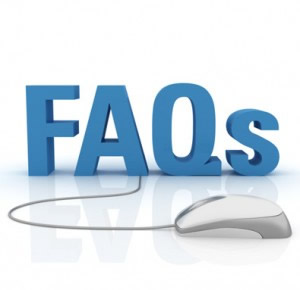By Herbert Jack Rotfeld, Department of Marketing, Auburn University, Alabama
Anyone whose ever attended an academic conference is familiar with the basic format: a session chair introduces three research papers and an additional person designated as a discussant. While actual attendance at our session was a bit sparse, my comments as a discussant for research papers at a recent conference generated comments among several people for the next couple days. This is what I said. . .
A discussant is a person who, while not having written a paper, has a forum to make a speech. While I will not be an exception, my speech will not be typical.
For many in my position, the presentations could validly be titled, “The Arrogant Twit You Failed to Properly Cite Might Be Your Discussant.” And, in the past, I have been guilty of that.
But today, I will take two minutes to discuss discussants.
I read the papers for this session before the conference. (I wasn’t too happy having to read one because something by Tolstoy would have been shorter. I wanted to wait for the movie version). I wrote extensive notes on what I would say and I even prepared transparencies. But after attending numerous research sessions all day and listening to the discussants, I am bothered. I wonder why anyone should be a discussant, or if they are really serving a useful purpose anymore beyond giving additional people a basis to request travel money.
Originally — apparently before the fall of the Second Temple by the memory of some people — discussants would summarize the paper presentations, try to find a common thread for the session, and briefly give a prod and focus for questions. In other words, they would start the ball rolling for audience questions and open discussion. Granted, this would be difficult when the papers lack any clear connection or relationship (as is the case with the second paper listed in your program for this session). At this conference, we have an additional problem since each paper is scheduled to have its own discussant, so overlapping material becomes almost a distraction.
Regardless, discussants now fill time that could have been used for questions and stifle points that people in the audience might wish to raise. Instead of stimulating discussion, the discussants are now critics, searching for bad things to say. When they are done, the session’s scheduled time is exhausted and the meeting period is over.
Of course, we have all seen discussants that are more interesting than the papers, but they are not meant to be the main attraction of a session. And sometimes the discussants are just plain mean, winning the Jerry Springer collegiality award.
But notwithstanding academic ego, mine included, no discussant is all knowing. And discussants are not necessarily the top expert in the sessions’ topics. At the social gathering the first night, two people told me they were assigned as discussants for papers on which they know nothing.
I might know more about this research subject than many of you. I might know less about it than some others. And we have all attended sessions where the discussant did not allow ignorance of the subject or total misunderstanding of the paper to get in the way of making negative comments.
Besides, every paper already had blind reviews to get accepted for presentation at the conference. Is there really a need for yet another, though now public, critique? It might be different if the presentations gave clashing opinions, followed by replies and rebuttals, but that is not the case here. Each session has research presented, then critiqued by the discussant, at which point the session often ends.
As is typical, our research presentations leave out a large amount of material from the written papers. The details might eventually be available in the proceedings, but many papers (including these three) are expected to be abstracted for the proceedings to allow for later journal submission. This means that, except for the reviewers, the session chair and me, none of you will read these papers until they are revised, altered and published in a journal. I don’t think you need to hear my review of a paper you might never get a chance to read.
I could easily give a detailed presentation rivaling that of the research papers in total verbiage. I could explain how I would have done their research, or tell them how to improve their analysis of current theories.
But I don’t want to take up your time with that.
At earlier sessions, I heard some papers that could have generated a lively and interesting discussion. But by the time the discussants were done, the session was out of time and over.
I’d rather participate in a discussion. That’s why I come to conferences. I can always read a paper, or call people for information or opinions on research, and I don’t need to travel just to hear other people read to me.
My comments today might not lead to an end of discussants, though it probably will mean this is the last time anyone will ask me to do the job.
But I want your discussion. And having said that, I think I’m done here.


